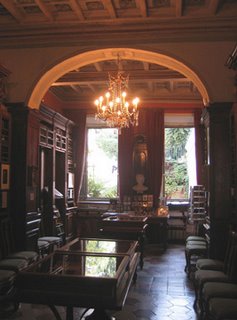 Mary Wollstonecraft Shelley
Mary Wollstonecraft ShelleyMary Wollstonecraft Shelley, writer and wife of Percy Bysshe Shelley, is not buried in Rome, nor did she write a novel that used the city as its backdrop. Nonetheless Mary Shelley traveled several times to the Eterna. Like so many other literary visitors of her era, she found Rome to be spellbinding. Most of her time in the city was taken up with visiting museums, archaeological sites, and churches, and a letter of 1819 describes her experience:
But my letter would never be at an end if I were to try [to] tell a millionth part of the delights of Rome - it has such an effect on me that my past life before I saw it appears a blank and now I begin to live - in the churches you hear the music of heaven and the singing of angels.Mary Shelley is best known for her novel Frankenstein; or,The Modern Prometheus, and though it speaks of a world outside Rome, we take a moment this Halloween to pay homage to her literary masterpiece.
Born in London on 30 August 1797, Mary Wollstonecraft Godwin was the second daughter of Mary Wollstonecraft, an early feminist writer, and of William Godwin, an anarchist, atheist, and dissenter. Mary lived up to her the achievements of her intellectual parents, publishing Frankenstein; or,The Modern Prometheus at a young age. How did this book come into being?
When Mary was sixteen years old, she met her husband-to-be, Percy Shelley, when he and his wife visited her family's bookshop and home. Over the course of the summer of 1814, they fell in love and eloped to France - despite the fact that Shelley was still married. They were soon forced to return to Britain for lack of financial resources.
In 1816, Mary and Percy returned to the continent, taking up residence in Lake Geneva for the summer. Lord Byron was living nearby, and one evening at a gathering of writers and intellectuals, Byron proposed a competition amongst the writers: each would compose a ghost story and share it with the others.
By the next morning, Mary had come up with nothing. However, the following night she had a waking dream in which she saw "the pale student of unhallowed arts kneeling beside the thing he had put together." After talking about this dream with Byron, Mary began to write what was to become the fourth chapter of Frankenstein, which begins, "It was on a dreary night of November...."
The story is one of a young Swiss student, Victor Frankenstein, who discovers the secret of animating lifeless matter. By assembling body parts, Frankenstein creates a monster who vows revenge on his creator after being rejected from society.
Today we often identify the artificially-created being in this story as "Frankenstein," but it is interesting to note that it is the creator, and not the creature, that bears this name in Shelley's novel.
Shelley's Frankenstein was published in 1818 and critics immediately began to debate its meaning. It has been read as an allegory of the Industrial Revolution and the ultimate power found in the creation of life. Others have seen it as a tale of pregnancy and motherhood, reflecting the fears of bringing a new innocent life into the world and raising it properly so that it does not become a monster.
Buy Frankenstein from the iDC City Bookshop
 Fall has arrived and there's no better time to be in Rome! The air is cool and silky; moderate temperatues make being outdoors a pleasure. These sunny autumn days are called ottobrate romane and since antiquity they have been celebrated for their extraordinary light and their crisp, clear air.
Fall has arrived and there's no better time to be in Rome! The air is cool and silky; moderate temperatues make being outdoors a pleasure. These sunny autumn days are called ottobrate romane and since antiquity they have been celebrated for their extraordinary light and their crisp, clear air.




